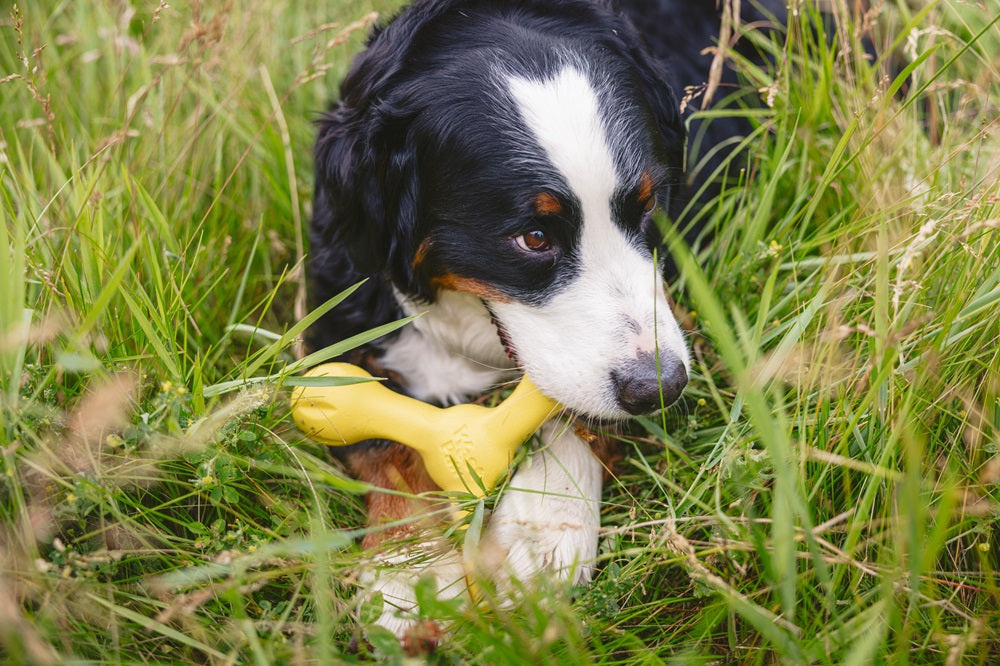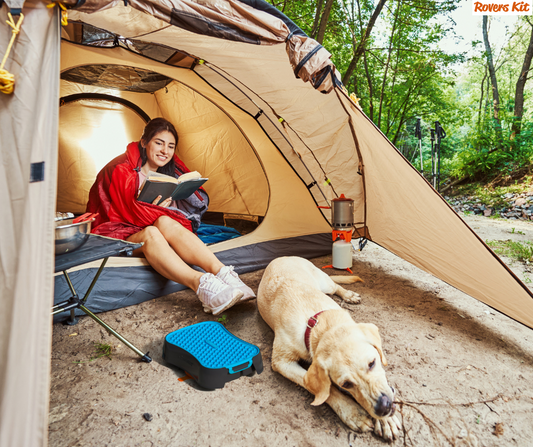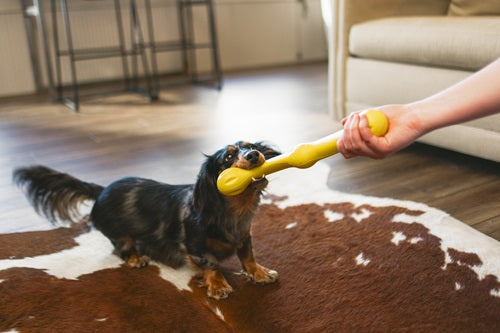Why does my dog destroy toys?
Dogs have many ways of playing, such as playing together e.g. a tugging game or a puzzle game, sporting together (e.g. with a Frisbee) or chewing. It doesn't matter what the dog likes: rough play or soft play, play together or play alone. As long as we choose the right toy for that moment and also choose a toy that fits to your dog's chewing behaviour. And this certainly does not always have to do with the size of your dog. A Chihuahua can also have a strong need to chew and destroy, while a Rottweiler can also handle toys very gently and not destroy. Of course there are breeds that have stronger jaws, but that does not always say whether they are also inclined to destroy everything.
Are there toys available that cannot be destroyed?
This question is perhaps the most frequently asked question by dog owners about toys for their dog. We can give an unequivocal answer to this. There are no toys that cannot be destroyed. In the end all toys can be destroyed if the dog wants, but there is a difference in the quality of toys.
In other words, “how strong or durable is the toy” and “what is the function of the toy you choose”. If the dog is focused on destroying the toy, it often succeeds in the end. We do see that when a dog does not quickly succeed in destroying a toy, they do not go further to destroy it. If you are not successful, the demolition behavior will also extinguish.
In addition, we also see that there are dogs that have a certain preference for "demolition" of toys. There dogs could e.g. destroy all plush toys made of fabric immediately, but don’t destroy toys made of other materials at all. But we also see the other way around; dogs that always want to destroy rubber or plastic toys, but when they have a plush toy they go to sleep with it or walk around, without the need to destroy it. Every dog has its own character and that is why it is also important to look at the play and chewing needs of your own dog and to find the right toy for your dog.
Why do dogs chew on toys or why do some dogs want to destroy toys?
Most dogs just love to chew. It is natural behavior and therefore it also contributes to the well-being of the dog. So it's important to offer your dog good chewing materials. This can be in the form of chews treats or chew toys. Chewing generally releases the happiness hormone endorphins and this makes the dog feel good.
For all dogs, chewing is itself rewarding. Besides that the endorphin hormone reduces pain, it is a happiness hormone so it just gives a good feeling to the dog. And something that is nice, will be repeated.
Some dogs like to chew a lot on the toy during play. They then have a strong need to chew and not the goal of destroying it. For example, while walking or running, they like to chew on a ball. It can help them relax. Then chewing has a useful function for the dog.
But there can also be other reasons why a dog chews on toys.
For puppies aged 14 – 15 weeks, chewing is certainly functional and therefore useful. At this age they start to change their teeth and that can hurt. When they chew on something, the happiness hormone endorphin is released and will reduces the pain. So chewing here helps to reduce pain and the puppy will feel better. It is therefore better to ensure that they have a chew bone or a strong, but not too hard, toy so that they can chew on it. Otherwise, they might chew your shoes or the couch.
For puppies, make sure that the chew toy is strong enough, but at the same time somewhat flexible and large enough. Rather too big than too small, because puppies also have to learn to chew and you want to prevent them from accidentally swallowing a piece. A toy that is too hard can actually cause more pain. The puppy may not realize that the toy or material is causing the pain while chewing, but may think that playing in general is not fun because it causes pain and then experience that play is not fun.
For dogs experiencing stress, we know that chewing can help them relax. Chewing can be soothing. Stress can be both positive and negative. Chewing can then help to empty the so-called "stress bucket". So they really benefit from chewing.
If you think your dog is chewing because of a stressor, you can also look at how you can further help your dog to lower the stress in a different way. This can help prevent the dog from destroying the toy. An example is e.g. when a dog finds it exciting when there are visitors. The dog may then chew vigorously on a toy (or something else).
When you see this behavior and you can link it to visitors, you might also be able to help your dog in another way to make visitors less exciting in the future and to prevent the dog from destroying toys. When you recognize this, we advise you to contact a qualified behavioral consultant for targeted help.
Chewing can also help maintain strength in the jaws. This can certainly be functional for older dogs. But here too it is good to make sure that the toy is not too hard, because older dogs often have some problems with their teeth and chewing can then hurt. So you have to find a good mix between a strong, but also flexible toy.
If we know that chewing gives a good feeling, then we also understand that when a toy can break every time, the dog is even more stimulated to destroy the next toy as well. It is self-rewarding behavior. And that which makes you feel good, you repeat. That is why it is so important to give your dog the right toy that matches to your dog's chewing behavior and strength. Taking into account that there are no toys that do not break, but there is a choice in durable toys that are less likely to break or, in many cases, will not break for your dog.
To choose the right toy for your dog, West Paw developed a so called “quick guide”. This guide will help you to choose the right toy. You look at:
• The type of play (interactive play – puzzle – chewing)
• The chewing behavior of your dog (soft chewer, moderated chewer, strong chewer)

In addition, West Paw also offers the so-called “Love it Guarantee”. This means that if the toy you bought is not strong enough for your dog's chewing behavior, you can choose another (stronger) toy once (one time free replacement) or get your money back. In this way West Paw tries to help the dog owner to choose the right toy that fits the play and chewing behavior of your dog.
Strong chew toys in the West Paw range are e.g. the Rumpus, Jive, Hurley, Tux and the Qwizl. You can also fill the Qwizl and Tux with food. The Qwizl is great to fill with a chew stick (treats) and this will also prevents them from quickly swallowing their chew stick.
Of course this does not mean that you cannot give your dog a toy from the other segments (soft or moderated chewer), but then you know that when you stop playing together, you should put this toy away to prevent your dog from destroying it. This also immediately removes the incentive to destroy it. In the future, this often leads to your dog having less of an urge to destroy toys. Because if something is not successful, the behavior slowly extinguish.
Blog by Rita Viel, export manager of West Paw Inc. This dog toy is produced in America and is a high quality toy. It even has the CE mark, which makes it safe for children. The toys are also 100% recyclable.
In addition to being an export manager for West Paw, Rita is also a certified dog trainer and co-founder of Dog School Kwispel in The Netherlands and a qualified behavioral consultant
Rita came into contact with West Paw toys years ago because she herself was looking for high-quality toys that could support solving a number of problem behaviors in dogs. She now gives workshops worldwide about playing with dogs and how you can also use play / toys with certain problem behaviors









